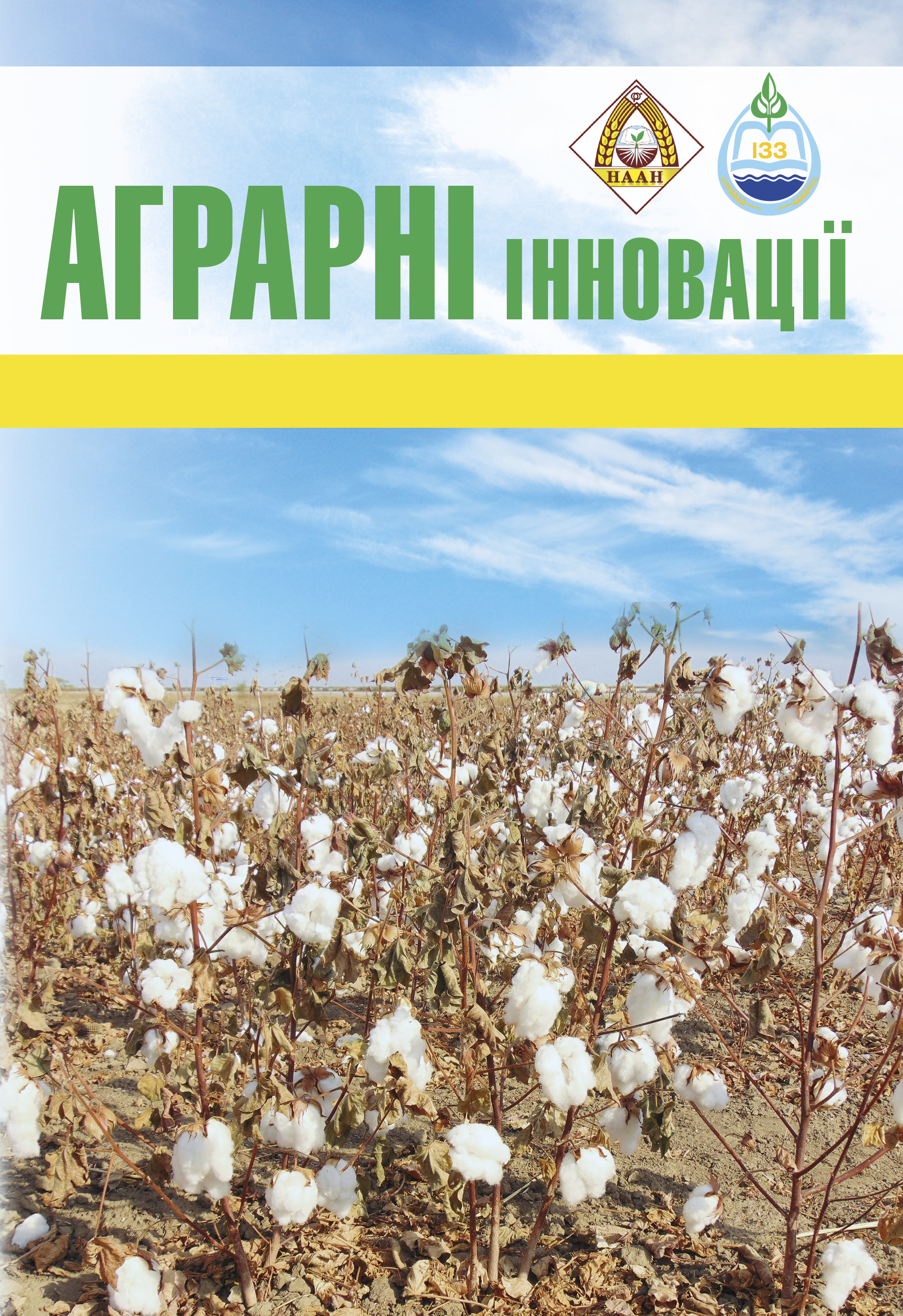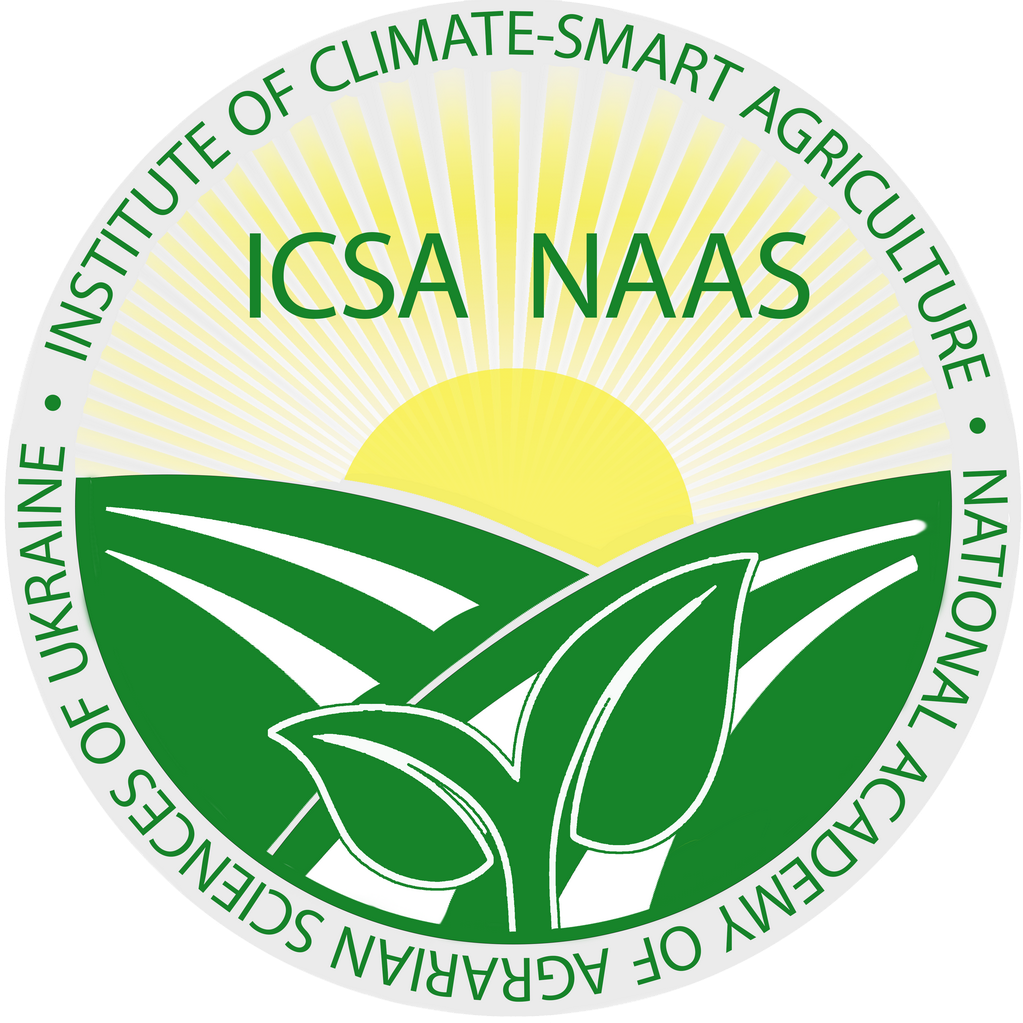Features of mutation induction in winter wheat of the steppe ecotype
Abstract
Sodium azide belongs to a group of highly effective chemical mutagens, conventionally called “supermuta- gens.” Their feature is the ability to cause a high frequency of induced mutations without significantly reducing plant viability. Purpose. The aim of the work was to determine the features of the induction of the frequency and spectrum of mutational changes in winter wheat plants in the secondand third generations after the action of sodium azide.Methods: Seeds of 2 winter wheat varieties Vezha and Igrista were treated with a solution of the chemical mutagen SA in concentrations of 0.01, 0.025, 0.05, 0.1%. 1000 win- ter wheat grains were used for each treatment. The expo- sure to the mutagen was 18 hours. In generations M2–M3, mutant families were selected by visual assessment, anal- ysis of phenophases, structural analysis, and analysis of grain yield. Results. 4,500 families were studied. The vari- ability was statistically significantly influenced by the factors of increasing concentration and genotype, when comparing the varieties in pairs, they differed significantly. Sparkling was more susceptible than Vezha. Due to the spectrum, there is no difference under the influence of higher concen- trations between the varieties (SA 0.1%). In all other cases, the variants differ from each other and from the control. In the spectrum, a total of 37 changed traits were obtained in 6 groups of variability, it is possible to reliably predict for this mutagen on this material a high number (in comparison) of high-stem and semi-dwarf mutants, early-ripening forms.A negative phenomenon is the high probability and regu- larity of forms with a small spike, sterile, high-stem. The used starting material is more promising in action in com- bination with moderate concentrations of AN 0.025–0.05%, at a concentration of AN 0.1%, regular negative changes occur. The varieties Vezha and Igrista, taking into account the preliminary study of the mutagen, should be recog- nized as an intermediate subject of action for this agent.Findings. SA as an agent of mutational activity induces a fairly high number of different types of mutations, but with a fairly high probability of the appearance of negative traits.High probability of obtaining valuable early-ripening and semi-dwarf forms. High probability of obtaining forms with a spelt-shaped ear, a high stem, late-ripening, sterile, with a club-shaped ear, which are negative traits.
References
2. Anter A. Induced Mutations in Wheat (Triticum aestivum L.) and Improved Grain Yield by Modifying Spike Length. Asian Journal of Plant Sciences. 2021. 20: P. 313-323. Retrieved January 14, 2023, from doi: 10.3923/ajps.2021.313.323
3. Chaudhary J., Deshmukh R., Sonah H. Mutagenesis Approaches and Their Role in Crop Improvement. Plants. 2019. 8, 467.
4. Mangi N. ., Baloch A. W., Khaskheli N. K., Ali M., Afzal W. Multivariate Analysis for Evaluation of Mutant Bread Wheat Lines Using Metric Traits. Integrative Plant Sciences. 2021. 1(1), 29–34.
5. Nazarenko M., Izhboldin O. Izhboldina O. Study of variability of winter wheat varieties and lines in terms of winter hardness and drought resistance. AgroLife Scientific Journal. 2022. 11(2), 116–123.
6. Nazarenko M. Identification and characterization of mutants induced by gamma radiation in winter wheat (Triticum aestivum L.). Scientific Papers. Series A. Agronomy. 2016. LIX. Р. 350–353.
7. Shabani M., Alemzadeh A., Nakhoda B., Razi1 H., Houshmandpanah Z., •Hildebrand D. Optimized gamma radiation produces physiological and morphological changes that improve seed yield in wheat. Physiology Molecular Biology Plants. 2022. 28(8). 1571–1586.
8. Spencer-Lopes M.M., Forster B.P., Jankuloski L. Manual on mutation breeding. Third edition. Food and Agriculture Organization of the United Nations, Rome. 2018. Р. 672.
9. Udage A. Introduction to plant mutation breeding: different approaches and mutagenic agents. Journal of Agricultural Sciences – Sri Lanka. 2021. 16. 466.
10. Yali W., Mitiku T. Mutation Breeding and Its Importance in Modern Plant Breeding. Journal of Plant Sciences. 2022. 10(2). 64-70.

This work is licensed under a Creative Commons Attribution 4.0 International License.






